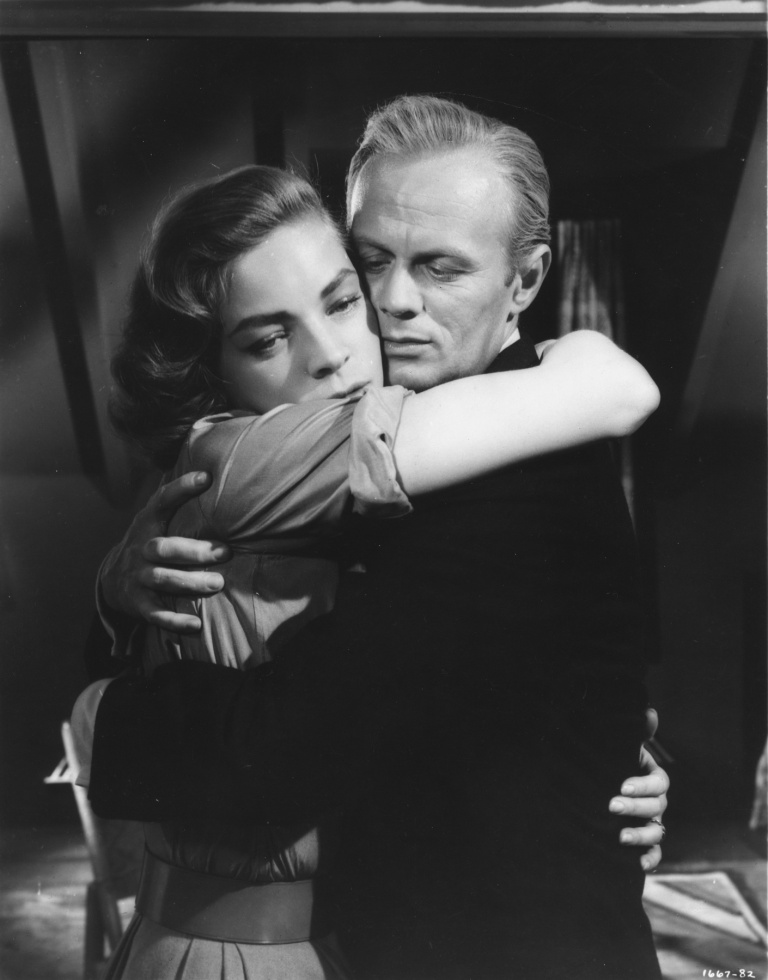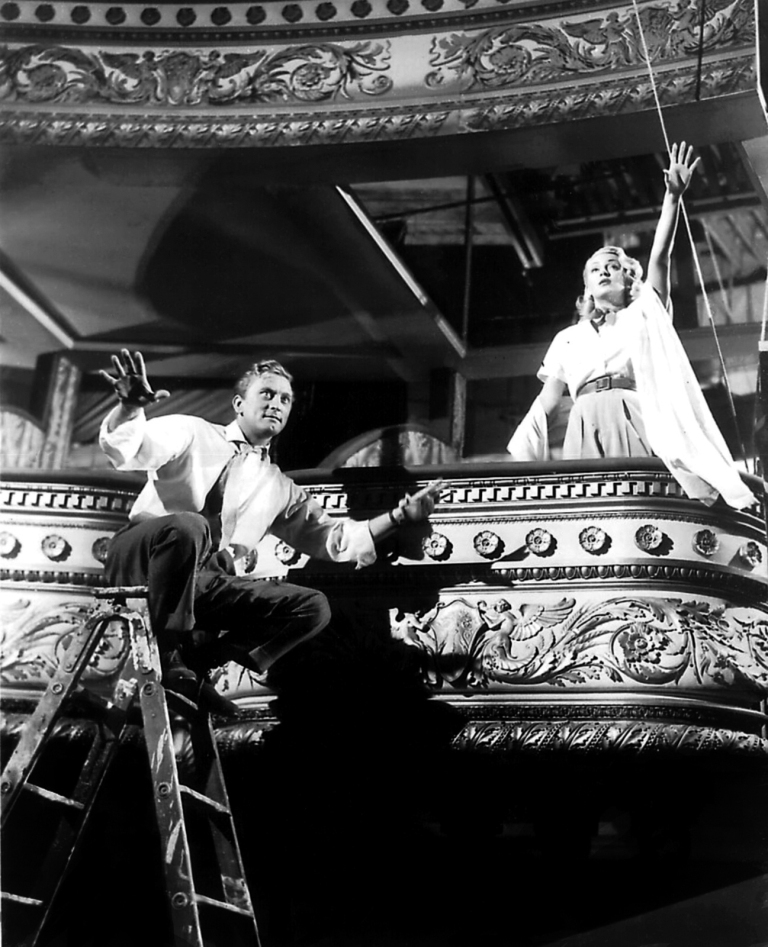For most film buffs, the name of director Vincente Minnelli immediately recalls the quintessence of the MGM musical of the 1940s and 1950s - a world of fantasy, brilliant colours, stylish décor and costumes in which Fred Astaire, Judy Garland, Gene Kelly and Leslie Caron dance and sing. The name also evokes steamy dramas and civilised comedies such as Some Came Running and Father of the Bride. As the BFI launches a major season of his films this week, however, it's worth pondering whether there is more to his oeuvre than meets the eye. Could Minnelli make claim to being an auteur?
Minnelli was the ne plus ultra of Hollywood studio directors. Out of his 33 features, all but three were made at Metro-Goldwyn-Mayer. No other director could claim such fidelity to a studio. In theory, most contract directors were subjugated to the studio's prevailing aesthetics and values. However, notwithstanding the omnipotent nature of the MGM producers, a few of the individual directors whom they employed, such as Minnelli, managed to stamp their unique personalities on almost everything they did.
 One doesn't have to be an auteur-didact to recognise the differences between, say, the MGM musicals of Stanley Donen and those of Minnelli. The latter could not have made On the Town (1949) or Seven Brides For Seven Brothers (1954); Donen could not have made Meet Me in St. Louis (1944), starring Judy Garland (pictured left) or Yolanda and the Thief (1945). In a sense, they lived in the same house, beautifully built and designed by MGM, but their separate rooms were vastly different. Minnelli's was exquisitely decorated with rich tapestry, antique furniture and heavy velvet curtains, while Donen's was uncluttered, light and airy, with open windows. What distinguished Minnelli from most of the other directors on the MGM roster was his mise-en-scène – his elegant compositions within an individual frame – the relation of objects and people, the interplay of light and dark, the pattern of colour.
One doesn't have to be an auteur-didact to recognise the differences between, say, the MGM musicals of Stanley Donen and those of Minnelli. The latter could not have made On the Town (1949) or Seven Brides For Seven Brothers (1954); Donen could not have made Meet Me in St. Louis (1944), starring Judy Garland (pictured left) or Yolanda and the Thief (1945). In a sense, they lived in the same house, beautifully built and designed by MGM, but their separate rooms were vastly different. Minnelli's was exquisitely decorated with rich tapestry, antique furniture and heavy velvet curtains, while Donen's was uncluttered, light and airy, with open windows. What distinguished Minnelli from most of the other directors on the MGM roster was his mise-en-scène – his elegant compositions within an individual frame – the relation of objects and people, the interplay of light and dark, the pattern of colour.
Significantly, for a studio contract director who usually took on most genres handed to him, Minnelli never made a Western, sci-fi, horror, gangster, war film or film noir. His films are divided strictly among musicals, melodramas and romantic comedies, all three more related to the theatre than other film genres.
Formerly a window-dresser for Marshall Field’s department store in Chicago, Minnelli had worked on the New York stage as a set designer and director of ballets and musical revues before Arthur Freed, the Diaghilev of the screen musical, asked him to come to Hollywood in 1940.
 A knowledge and taste for art and design imbue his films, and he was lucky to have worked during the golden age of three-tone Technicolor. Yolanda and the Thief is drenched in exotic colours and Fred Astaire dreams himself dancing in a Dali-Yves Tanguy landscape. The 18-minute ballet finale of An American in Paris (1951) is a series of tableaux dansantes based on French Impressionist and Post-Impressionist paintings with Gene Kelly at one moment in the posture of Lautrec’s Chocolat. Cyd Charisse dances against a Chagall-like backdrop in The Band Wagon (1953), and in the same film Fred Astaire’s hotel room is bedecked with originals by Degas, Modigliani and Renoir, which are finally sold to finance a show. "Those fellows loved the theatre", explains Fred.
A knowledge and taste for art and design imbue his films, and he was lucky to have worked during the golden age of three-tone Technicolor. Yolanda and the Thief is drenched in exotic colours and Fred Astaire dreams himself dancing in a Dali-Yves Tanguy landscape. The 18-minute ballet finale of An American in Paris (1951) is a series of tableaux dansantes based on French Impressionist and Post-Impressionist paintings with Gene Kelly at one moment in the posture of Lautrec’s Chocolat. Cyd Charisse dances against a Chagall-like backdrop in The Band Wagon (1953), and in the same film Fred Astaire’s hotel room is bedecked with originals by Degas, Modigliani and Renoir, which are finally sold to finance a show. "Those fellows loved the theatre", explains Fred.
Only the décor-conscious Minnelli could have made The Cobweb (1955), in which an argument about curtains in the reception room of a psychiatric clinic sparks off most of the tensions among patients and staff. The Cobweb (pictured right) also has the following dialogue:
John Kerr: Red and green… Derain died last fall in a hospital. You wouldn’t know who he was.
Gloria Grahame: It happens I do!
John Kerr: Who?
Gloria Grahame: A French painter. One of Les Fauves!
John Kerr: He died in a hospital… in a white bed, in a white room – doctors in white standing around – the last thing he said was, "Some red… show me some red. Before dying I want to see some red and some green."
It was inevitable that the colour-conscious Minnelli would be drawn to make Lust For Life (1956), the Vincent Van Gogh biopic in which the paintings are exceptionally recreated and the physical resemblance of Kirk Douglas (below) to the painter is hallucinatory.
 Meet Me in St Louis, the first real masterpiece of the golden age of MGM musicals, draws its visual inspiration from American turn-of-the-century paintings and design. In his first Technicolor film, Minnelli cast a loving eye on period detail, getting authenticity from the costumes (Irene Sharaff) and set designs, all bathed in George Folsey’s mellow photography.
Meet Me in St Louis, the first real masterpiece of the golden age of MGM musicals, draws its visual inspiration from American turn-of-the-century paintings and design. In his first Technicolor film, Minnelli cast a loving eye on period detail, getting authenticity from the costumes (Irene Sharaff) and set designs, all bathed in George Folsey’s mellow photography.
Minnelli even got away with filming Judy Garland in a deep red velvet dress beside red-haired Lucille Bremer in emerald green in a red plush room full of extras in pastel shades. Above all, Garland, in glowing close-ups, with her large brown eyes, high cheekbones and long tresses of auburn hair, is filmed with love, the love of her future husband. He transformed the ugly duckling into a swan.
Minnelli purposely goes for theatrical, stylised settings for The Pirate (1948), but the editing, the colour photography and the Cole Porter songs, wittily performed by Garland and Kelly, prevents it from seeming stagy. "I know there is a real world and a dream world and I shan’t confuse them," Garland says. Ironically, this is precisely what Minnelli’s musicals set out to do.
The Band Wagon was the only Minnelli musical to use a show business background. A rare musical à clef, it not only plays on Astaire’s "passé" persona, it wittily inverts the clichés of the genre, taking sideswipes at classical ballet, high-brow theatre and dime novels. When Oscar Levant says, "Gosh, with all this raw talent around, why can’t us kids get together and put on ourselves a show?", he is mocking dialogue from Freed’s earlier productions with the youthful Garland and Mickey Rooney. It also contains a dig at Minnelli’s own "artiness" in the shape of Jack Buchanan’s pretentious actor-director.
Watch the trailer for The Band Wagon
There are other cogent examples in Minnelli’s films of the dichotomy between popular entertainment and "high art". In Designing Woman (1957), Gregory Peck is a sports writer married to sophisticated fashion designer Lauren Bacall, the woman of the punnish title. She attempts to participate in her husband’s life, but when she goes to a prizefight, she faints away at the first sign of blood. While Peck tries to play poker with his sporting cronies, Bacall entertains her artsy friends in the next room. One of the latter is an effeminate ballet dancer called Randy Owens (the choreographer Jack Cole), who keeps getting some pretty suspicious looks from Peck’s buddies. When Randy overhears an insinuating remark made by Peck, he soberly declares that he has a wife and three children. He then turns out to be a hard nut rather than a fruit by knocking out tough gangsters with some nifty high kicks. Although Minnelli was married four times and had two children, one of them Liza Minnelli, it seemed to be a means of countering persistent rumours of his bisexuality.
The film preceding Designing Woman was the bowdlerised adaptation of Tea and Sympathy (1956), Robert Anderson’s sad and stinging play about a sensitive young man at a private boys’ school, taunted by his peers because he would rather listen to classical music than play sports. They equate his sensitivity with homosexuality, though the words "homosexual" and "queer" are replaced in the film by "sister boy". In order to ensure that audiences were in no doubt as to the hero’s heterosexual credentials, the film is told in flashback by Tom Lee (John Kerr), now a happily-married husband and father. It seems to suggest, perhaps unintentionally, that the shame was Tom being mistakenly accused of the horrible charge of being "queer", and that the other characters’ attitudes to him might have been justified if he really had been.
Minnelli reluctantly accepted the inevitable censorship of Tea and Sympathy, and of a few other of his films. As if foreseeing this, Madame Bovary (1949) opens with the author Gustave Flaubert (James Mason) defending his novel in court, during the book's obscenity trial.
 In 1952, Minnelli turned down the sentimental quasi-musical Lili in order to be able to make a scalding attack on Hollywood in The Bad and the Beautiful, though it turned out to be mainly on the megalomania of a thwarted producer (Kirk Douglas). "The screenplay fascinated me. It told of a film producer who uses everyone in his rise to the top," Minnelli wrote, admitting that he had a few of his studio bosses in mind. "Yet, at the end, all those who have been exploited are better off for having worked with him… a harsh and cynical story and yet strangely romantic…"
In 1952, Minnelli turned down the sentimental quasi-musical Lili in order to be able to make a scalding attack on Hollywood in The Bad and the Beautiful, though it turned out to be mainly on the megalomania of a thwarted producer (Kirk Douglas). "The screenplay fascinated me. It told of a film producer who uses everyone in his rise to the top," Minnelli wrote, admitting that he had a few of his studio bosses in mind. "Yet, at the end, all those who have been exploited are better off for having worked with him… a harsh and cynical story and yet strangely romantic…"
While making The Bad and The Beautiful, Minnelli and Douglas decided to make Lust for Life. Thus began Minnelli’s losing battle with the front office to avoid making it in CinemaScope out of deference to the shape of Van Gogh’s paintings, but he won the fight to substitute Ansco Color for Eastman Color, which would better capture Van Gogh’s approach to colour. He only got to make the film by agreeing to direct the screen version of the Broadway musical Kismet (1955), a show he hated.
Among his CinemaScope musicals, only Gigi (1958) is in the same league as his earlier ones - Brigadoon (1954) and Kismet were top-heavy studio-bound Broadway transfers - but Bells Are Ringing (1960) has moments that recall better days.
Exactly 10 years after The Bad and the Beautiful, Minnelli made its companion piece, Two Weeks in Another Town (1962), an even more jaundiced look at Hollywood filmmaking. Shot at Cinecittà in Rome, it was influenced by La Dolce Vita (1960), and included a wild orgy scene. This was cut from the film, as were other sequences which the Production Code found "full of blatant adultery and casual fornication". The movie still remains one of his better late films, including as it does a scene in which Minnelli, with staggering chutzpah, pays homage to himself. The actor (Kirk Douglas) and director (Edward G Robinson) of the film-within-the-film watch a sequence from The Bad and the Beautiful, and comment on how great the film was and how they would never recapture such perfection.
Two Weeks In Another Town was admired by Jean-Luc Godard who made Contempt (1963), his own movie of filmmaking in Italy, a year later. It included a homage to one of Minnelli’s best melodramas, where Michel Piccoli, wearing a stetson and smoking a cigar in the bath, says, "I’m just imitating Dean Martin in Some Came Running."
After Two weeks In Another Town, Minnelli was only to make five further films in the next 14 years. His three non-MGM movies (Goodbye Charlie, 1964, On A Clear Day You Can See Forever, 1970, and A Matter of Time, 1976) are among his worst. Despite his battles, he seemed to need the studio machinery and security and when the studio system evaporated, so did he.














Add comment